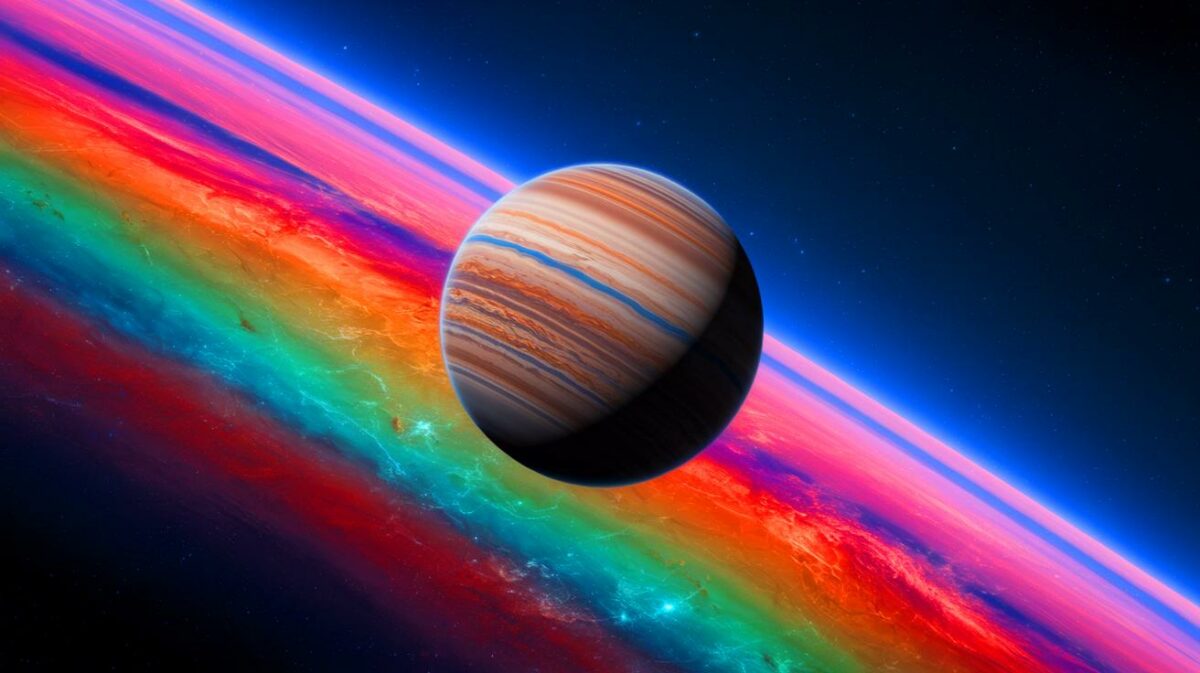| IN A NUTSHELL |
|
The cosmos is full of mysteries, and the recent findings from the James-Webb Telescope concerning the exoplanet K2-18b have certainly captured global attention. Located a staggering 124 light-years away in the Leo constellation, this distant world has become a focal point for astronomers and enthusiasts alike. The signals detected by James-Webb could potentially reveal groundbreaking insights into a promising exoplanetary biosphere, stirring both excitement and curiosity in the scientific community.
A Planet of Epic Proportions
Discovered a decade ago, K2-18b is notable for its enormous size and intriguing characteristics. Its diameter is 2.6 times that of Earth, and it boasts a mass 8.6 times greater. These staggering dimensions suggest it may be a type of planet known as “hycean,” possibly featuring an ocean beneath a dense hydrogen-rich atmosphere. The James-Webb Telescope, equipped with the MIRI instrument, continues to peel back the layers of this mysterious world, providing unprecedented insights into its nature.
K2-18b’s composition and atmospheric conditions make it a captivating subject for study. The potential presence of a vast ocean, combined with its substantial atmosphere, hints at environments that could support life. As researchers delve deeper into its mysteries, each discovery adds a new piece to the puzzle of understanding this distant planet’s unique characteristics.
Chemical Traces That Intrigue
An international team of researchers has identified the presence of two specific molecules in the atmosphere of K2-18b: dimethyl sulfide (DMS) and dimethyl disulfide (DMDS). On Earth, these compounds are exclusively produced by marine organisms, suggesting the possibility of biological processes. Additionally, methane (CH₄) and carbon dioxide (CO₂) were detected in 2023, indicating a complex atmospheric chemistry.
The presence of these molecules is significant because they could be potential biosignatures—indicators of life. While the findings are exciting, scientists remain cautious, understanding that these molecules could also originate from non-biological processes. The ongoing analysis of these chemical traces will be crucial in determining whether they indeed suggest a biosphere on K2-18b.
Is There a Biosphere on K2-18b?
The data obtained presents intriguing possibilities regarding the existence of a biosphere on K2-18b. Notably, the concentration of DMS is estimated to be 10 parts per million, a much higher figure than observed on Earth. While the confidence level is measured at three sigma, this represents a significant step forward in the search for life beyond our solar system.
These findings fuel speculation about extraterrestrial life, but scientists urge caution. The elevated levels of DMS could be attributed to unknown chemical reactions or geological processes unique to K2-18b. As researchers continue to examine these signals, the potential for discovering life elsewhere in the universe remains a tantalizing prospect.
Cautious Optimism Among Scientists
The astrophysics team at the University of Cambridge expresses optimism while maintaining a cautious stance on the question of extraterrestrial life. The scientific community is diligent in exploring all possibilities, acknowledging that the molecules identified could result from various processes on K2-18b. Some hypotheses even suggest unknown chemical reactions or the presence of a magma world beneath a hydrogen envelope.
As scientists scrutinize the data, they remain open to multiple interpretations. The complexity of K2-18b’s atmosphere challenges researchers to consider a wide range of scenarios, each offering new insights into the potential for life on this distant planet. This cautious optimism drives ongoing research efforts, as scientists strive to unlock the secrets of K2-18b.
Future Challenges and Perspectives
To resolve current uncertainties, researchers must refine their observations and continue investigations with precision. While a mission to K2-18b remains beyond our reach—given that Voyager 1, traveling at 38,000 miles per hour, would take over two million years to get there—projects like Breakthrough Starshot aim to change the paradigm by achieving 20% of the speed of light.
These ambitious endeavors highlight the challenges and opportunities in exploring distant worlds. As technology advances, the possibility of reaching K2-18b becomes more conceivable. The pursuit of such missions underscores the relentless human quest for knowledge, as we seek to explore the universe and uncover its hidden wonders.
As we stand on the brink of potentially monumental discoveries, the findings from K2-18b push the boundaries of our understanding of the universe. The quest for extraterrestrial life remains one of humanity’s greatest endeavors. What new revelations might the James-Webb Telescope uncover next in its journey through the cosmos?
Did you like it? 4.5/5 (29)









Wow, this is mind-blowing! Can’t wait to hear more about K2-18b! 🌌
Is there any chance these molecules could come from non-biological sources?
Methanol (CH₃OH)
Hydrogen sulfide (H₂S)
Sodium methoxide (NaOCH₃)
mixed correctly could but not likely to happen in nature
I guess I should add that Methanol is only created by Biomass Decomposition:
Methanol can be produced from biomass feedstock, which includes forestry and agricultural waste by-products, municipal solid waste, and black liquor from the pulp and paper industry
Anaerobic Digestion:
Methanol can also be produced from renewable natural gas sourced from landfills, sewage plants, or animal manure farms. This process involves the anaerobic digestion of organic matter, which produces biogas that can be converted into methanol
Photosynthesis and Fermentation:
Certain bacteria and algae can produce methanol through photosynthesis and fermentation processes. These microorganisms convert carbon dioxide and water into methanol using sunlight as an energy source.
So once again it means life.
Didnt really read the article eh? SMH
While the findings are exciting, scientists remain cautious, understanding that these molecules could also originate from non-biological processes.
While the findings are exciting, scientists remain cautious, understanding that these molecules could also originate from non-biological processes.
Does this mean we could find aliens swimming in K2-18b’s oceans? 🤔
Thanks for the article! It’s fascinating to see how much we’re learning with the James-Webb Telescope.
Are they sure it’s not just some cosmic fart? 😂
So, when are we sending a probe to K2-18b? 🚀
This is a huge step forward in the search for life. Congrats to the team!
Can we trust these signals, or are they just anomalies?
Does this discovery change our understanding of exoplanets?
Wow, 124 light-years away? That’s like… far!
image caption on what is very clearly a painting, and not a photograph or a telescope image, even corrected for color: “A breathtaking view of the James-Webb Telescope capturing the enigmatic atmosphere of the distant exoplanet K2-18b.”
Just outright lying now, huh?
This is old news that you are overhyping…
Flat out lies, exaggeration, endless speculation, and reported as important when it’s not even close.